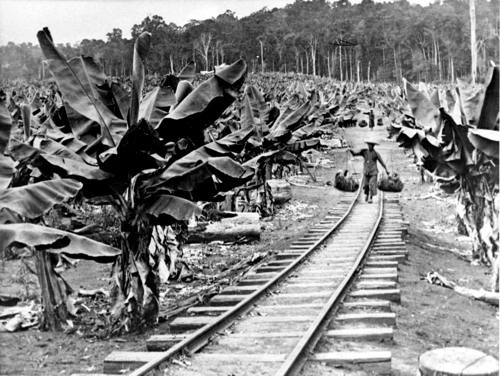- Quality characteristics of biscuits prepared from finger millet seed coat based composite flour. They’re nutritious. Crocodile Dundee on the tastiness of the iguana may, however, apply.
- Minerals and trace elements in a collection of wheat landraces from the Canary Islands. There are differences, but environment and agronomic practices could affect them.
- Lowering carbon footprint of durum wheat by diversifying cropping systems. Yes, by 7-34%, depending on how the diversification was done.
- Effect of shading by baobab (Adansonia digitata) and néré (Parkia biglobosa) on yields of millet (Pennisetum glaucum) and taro (Colocasia esculenta) in parkland systems in Burkina Faso, West Africa. Taro is a shade lover; grow it under néré, and vice versa.
- Ethnobotanical, morphological, phytochemical and molecular evidence for the incipient domestication of Epazote (Chenopodium ambrosioides L.: Chenopodiaceae) in a semi-arid region of Mexico. Good to know; I love epazote.
- Grape varieties (Vitis vinifera L.) from the Balearic Islands: genetic characterization and relationship with Iberian Peninsula and Mediterranean Basin. See the grand sweep of European history unfold.
- Microsatellite characterization of grapevine (Vitis vinifera L.) genetic diversity in Asturias (Northern Spain). No evidence of communication with the previous group.
- Plant economy of the first farmers of central Belgium (Linearbandkeramik, 5200–5000 b.c.). They were dope fiends.
- Selection for earlier flowering crop associated with climatic variations in the Sahel. Compared to 1976 millet samples, samples collected in 2003 had shorter lifecycle (due to an early flowering allele at the PHYC locus increasing in frequency), and a reduction in plant and spike size. So you don’t need new varieties, the old ones will adapt to climate change. Oh, and BTW, there’s been no genetic erosion.
- Do species’ traits predict recent shifts at expanding range edges? No.
- The domestication syndrome genes responsible for the major changes in plant form in the Triticeae crops. Failure to disarticulate and 6-rows in barley, in detail. Part of a Special Issue on Barley.
- The genetics of colour in fat-tailed sheep: a review. I didn’t know karakul had fat tails.
Bananas on TV and the blogosphere
In Africa, political parties must stop using real banana leaves as their symbol at rallies or on buses…
Why? Pat Heslop-Harrison explains the reason, and much more, in a great new post at AoB Blog. The occasion is the 13 May edition of the BBC TV programme The One Show, which included an interview with Dr Heslop-Harrison by journalist, food critic and TV personality Jay Rayner. With links to a couple of freely available Annals of Botany papers and a presentation too.
LATER: Let’s not forget the importance of banana for brewing beer in parts of Africa.
Nibbles: Fruit-tree fundraiser, Bangladesh seed crisis, Mead, Early farmers, Fruit genebank
- Bioversity promotes a fund-raiser for forgotten fruit trees.
- Seed crisis in Bangladesh. It’s complicated. Really complicated.
- Belatedly, mirthful report on mead.
- “…during the advent of agriculture … early farmers may have at first come together in communal activities, prior to congregating in villages.”
- USDA’s fruit genebank at Corvallis in the news.
Nibbles: Beer in Sudan, Tea and pastoralism in Kenya, Iron in beans, Mediterranean diet
- Sudanese beer-drinkers in trouble. Let my people go!
- The future of tea in Kenya. Mother-in-law alerted.
- Meanwhile, Kenyan pastoralists go back to the future.
- Slideshow: “Combating hidden hunger through bio-fortification.” Beanz meanz ironz.
- May is Mediterranean Diet Month. It is? I mean, who knew?
Brainfood: Australian obesity, Pigeonpea blight, Chocolate spot, Agroforestry, Andean potato agriculture, Salinity tolerance, Tree migration, Tea
- The Australian paradox: A substantial decline in sugars intake over the same timeframe that overweight and obesity have increased. Wait … there’s an Australian paradox too?
- Phytophthora blight of Pigeonpea [Cajanus cajan (L.) Millsp.]: An updating review of biology, pathogenicity and disease management. The wild relatives are sources of resistance, but that won’t be enough.
- Effects of crop mixtures on chocolate spot development on faba bean grown in mediterranean climates. Intercropping with cereals reduces the disease.
- Combining high biodiversity with high yields in tropical agroforests. It can be done, for smallholder cacao in Indonesia.
- And elsewhere … Cost benefit and livelihood impacts of agroforestry in Bangladesh. An entire book.
- Resource concentration dilutes a key pest in indigenous potato agriculture. Monocropping can be sustainable. Via.
- Community versus single-species distribution models for British plants. Overall, better stick with the single species kind, but it was worth a try.
- Quantitative trait loci for salinity tolerance in barley (Hordeum vulgare L.). They exist, and there are markers.
- Climate, competition and connectivity affect future migration and ranges of European trees. Well, doh.
- Quantifying carbon storage for tea plantations in China. All the tea in China…sequesters a lot of C. But plant type doesn’t count for much.
